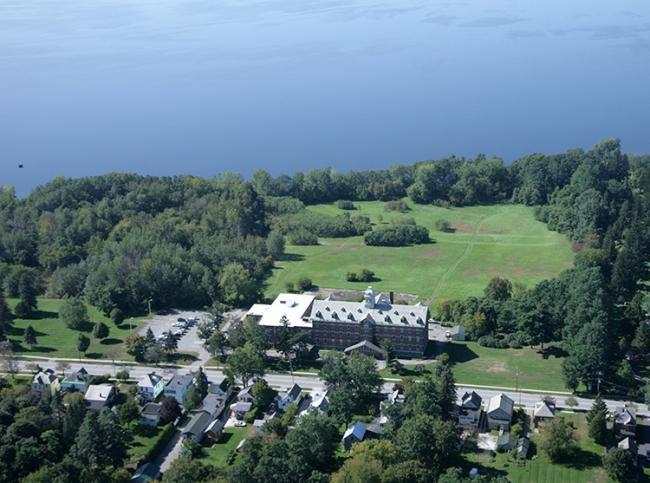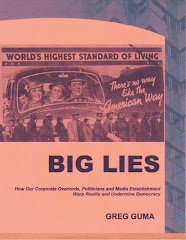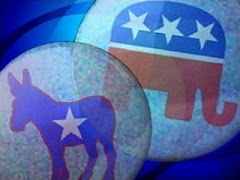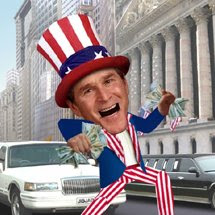Part One: Barack in Wonderland
It was a fairy tale premise: Once upon a time a charismatic prince appeared magically and gave an inspiring, instantly famous speech. Four years later he was leading the most powerful kingdom in the world from the brink of disaster.
Believable, isn’t it? But, as Ken Silverstein revealed in Harpers long before the 2008 presidential election, by the time Barack Obama gave his keynote speech at the 2004 Democratic Convention he “had already undergone an equally successful but much quieter audition with Democratic Party leaders and fund-raisers, without whose support he would surely never have been chosen for such a prominent role at the convention.”
More than a year after becoming president, Obama has done much to justify that early establishment enthusiasm. Health “reform” has passed, but without single payer, a public option, or a fundamental challenge to insurance company control of the system. Iraq is no longer front page news, but the fighting continues, at least 50,000 troops will be stationed there indefinitely, Guantanamo remains open, and US entanglement in Afghanistan and Pakistan is deeper than ever. An economic meltdown has been averted and the president talks tough about Wall Street abuses, but top financial executive still rake in huge bonuses and have easy access to political players.
The nomination of Solicitor General Elena Kagan to the US Supreme Court is emblematic of Obama’s approach. Rather than putting forward a principled progressive to replace retiring Justice John Paul Stevens, he chose a Democratic insider with an ambiguous judicial philosophy. Described as persuasive negotiator and “coalition builder,” she is associated with the Clinton administration, Lawrence Summers, Harvard, and Chicago politics. Although she criticized the Bush administration’s position on torture, she is an advocate of executive discretion who thinks the President can hold terror suspects indefinitely and, in her current role, has used state secrets as an argument to suppress lawsuits.
To be fair, the administration has made some constructive moves and a number of promises have been kept. Obama has taken steps to insure more children, reversed the Bush policy on Stem Cell research, pushed legislation to somewhat limit greenhouse emissions, increased Pell Grants, cracked down on credit card companies and some bank practices, and helped pass necessary economic stimulus legislation. He has extended a hand to the Muslim world, signed a new pact reducing the number of long-range nuclear missiles, and condemned the US Supreme Court’s disastrous decision to give corporations the right to spend as much as they want on commercials supporting or targeting specific political candidates.
It’s also understandable that a president sometimes must change a position due to unpleasant realities. But some of Obama’s decisions are hard to rationalize, particularly his endorsement of off-shore drilling – after criticizing the policy during his campaign and despite the current disaster in the Gulf of Mexico. The reason is supposedly to use drilling as a bargaining chip to win support for climate change legislation. But he also changed his view on individual mandates under health care reform, selected Social Security and Medicare critic Alan Simpson to co-chair a deficit-reduction commission, and has embraced more of the Bush logic on national security and secrecy than many supporters would like.
As it is working out, the end of that catchy campaign slogan, “Yes we can,” may be something like “…make some small changes without rocking the boat.”
All this becomes easier to understand when you look at where Obama’s meteoric rise actually began. The first favorable elite assessment reportedly came in October, 2003, almost a year before his famous convention speech. Vernon Jordan, the well-known power broker who chaired Bill Clinton's presidential transition team in 1992, placed calls to roughly 20 of his friends and invited them to a fund-raiser at his home. That event – not a cell group meeting in Bill Ayers’ kitchen – was his initiation into an old Washington ritual. According to Silverstein, the essence is “fund-raising parties and meet-and-greets where potential stars are vetted by fixers, donors, and lobbyists."
Obama passed with honors. At meetings with players from the financial, legal and lobbyist sectors, he impressed people like Gregory Craig – a well-connected attorney, former special counsel to the White House, and eventually Obama’s first pick to do it again; Mike Williams, legislative director of the Bond Market Association; Tom Quinn, partner at a top corporate law firm, Venable, and a leading Democratic power broker; and Robert Harmala, another Venable partner and fixer in Democratic circles.
Word spread through Washington's top law firms, lobby shops, and political offices, going massive after his win in the March 2004 Democratic Senate primary. Contributions from attorneys, lobbyists and Wall Street honchos streamed in at a rapid and accelerating pace.
The "good news" for insiders? Obama's "star quality" wouldn’t be directed against the business class. He was, as Silverstein noted, "someone the rich and powerful could work with." According to Obama biographer and Chicago Tribune reporter David Mendell, in 2003 and early 2004 Obama cultivated support by advocating fiscal restraint, calling for pay-as-you-go government and singing the praises of free trade and charter schools. He "moved beyond being an obscure good-government reformer to being a candidate more than palatable to the moneyed and political establishment."
"On condition of anonymity," Silverstein added, "one Washington lobbyist I spoke with was willing to point out the obvious: that big donors would not be helping out Obama if they didn't see him as a 'player.' The lobbyist added: 'What's the dollar value of a starry-eyed idealist?'"
The election of the first Black president certainly promised to be a time of change. The question was: what kind? On that, the signs were always ambiguous. In the closing weeks of the campaign, Obama explicitly referred to the Clinton presidency as a model for his own. And he had already surrounded himself with members of the political establishment.
Obama: Myths & Realities. Part one of three.
Part Two: Hope or Hoax?
Part Three: Words vs. Deeds
It was a fairy tale premise: Once upon a time a charismatic prince appeared magically and gave an inspiring, instantly famous speech. Four years later he was leading the most powerful kingdom in the world from the brink of disaster.
Believable, isn’t it? But, as Ken Silverstein revealed in Harpers long before the 2008 presidential election, by the time Barack Obama gave his keynote speech at the 2004 Democratic Convention he “had already undergone an equally successful but much quieter audition with Democratic Party leaders and fund-raisers, without whose support he would surely never have been chosen for such a prominent role at the convention.”
More than a year after becoming president, Obama has done much to justify that early establishment enthusiasm. Health “reform” has passed, but without single payer, a public option, or a fundamental challenge to insurance company control of the system. Iraq is no longer front page news, but the fighting continues, at least 50,000 troops will be stationed there indefinitely, Guantanamo remains open, and US entanglement in Afghanistan and Pakistan is deeper than ever. An economic meltdown has been averted and the president talks tough about Wall Street abuses, but top financial executive still rake in huge bonuses and have easy access to political players.
The nomination of Solicitor General Elena Kagan to the US Supreme Court is emblematic of Obama’s approach. Rather than putting forward a principled progressive to replace retiring Justice John Paul Stevens, he chose a Democratic insider with an ambiguous judicial philosophy. Described as persuasive negotiator and “coalition builder,” she is associated with the Clinton administration, Lawrence Summers, Harvard, and Chicago politics. Although she criticized the Bush administration’s position on torture, she is an advocate of executive discretion who thinks the President can hold terror suspects indefinitely and, in her current role, has used state secrets as an argument to suppress lawsuits.
To be fair, the administration has made some constructive moves and a number of promises have been kept. Obama has taken steps to insure more children, reversed the Bush policy on Stem Cell research, pushed legislation to somewhat limit greenhouse emissions, increased Pell Grants, cracked down on credit card companies and some bank practices, and helped pass necessary economic stimulus legislation. He has extended a hand to the Muslim world, signed a new pact reducing the number of long-range nuclear missiles, and condemned the US Supreme Court’s disastrous decision to give corporations the right to spend as much as they want on commercials supporting or targeting specific political candidates.
It’s also understandable that a president sometimes must change a position due to unpleasant realities. But some of Obama’s decisions are hard to rationalize, particularly his endorsement of off-shore drilling – after criticizing the policy during his campaign and despite the current disaster in the Gulf of Mexico. The reason is supposedly to use drilling as a bargaining chip to win support for climate change legislation. But he also changed his view on individual mandates under health care reform, selected Social Security and Medicare critic Alan Simpson to co-chair a deficit-reduction commission, and has embraced more of the Bush logic on national security and secrecy than many supporters would like.
As it is working out, the end of that catchy campaign slogan, “Yes we can,” may be something like “…make some small changes without rocking the boat.”
All this becomes easier to understand when you look at where Obama’s meteoric rise actually began. The first favorable elite assessment reportedly came in October, 2003, almost a year before his famous convention speech. Vernon Jordan, the well-known power broker who chaired Bill Clinton's presidential transition team in 1992, placed calls to roughly 20 of his friends and invited them to a fund-raiser at his home. That event – not a cell group meeting in Bill Ayers’ kitchen – was his initiation into an old Washington ritual. According to Silverstein, the essence is “fund-raising parties and meet-and-greets where potential stars are vetted by fixers, donors, and lobbyists."
Obama passed with honors. At meetings with players from the financial, legal and lobbyist sectors, he impressed people like Gregory Craig – a well-connected attorney, former special counsel to the White House, and eventually Obama’s first pick to do it again; Mike Williams, legislative director of the Bond Market Association; Tom Quinn, partner at a top corporate law firm, Venable, and a leading Democratic power broker; and Robert Harmala, another Venable partner and fixer in Democratic circles.
Word spread through Washington's top law firms, lobby shops, and political offices, going massive after his win in the March 2004 Democratic Senate primary. Contributions from attorneys, lobbyists and Wall Street honchos streamed in at a rapid and accelerating pace.
The "good news" for insiders? Obama's "star quality" wouldn’t be directed against the business class. He was, as Silverstein noted, "someone the rich and powerful could work with." According to Obama biographer and Chicago Tribune reporter David Mendell, in 2003 and early 2004 Obama cultivated support by advocating fiscal restraint, calling for pay-as-you-go government and singing the praises of free trade and charter schools. He "moved beyond being an obscure good-government reformer to being a candidate more than palatable to the moneyed and political establishment."
"On condition of anonymity," Silverstein added, "one Washington lobbyist I spoke with was willing to point out the obvious: that big donors would not be helping out Obama if they didn't see him as a 'player.' The lobbyist added: 'What's the dollar value of a starry-eyed idealist?'"
The election of the first Black president certainly promised to be a time of change. The question was: what kind? On that, the signs were always ambiguous. In the closing weeks of the campaign, Obama explicitly referred to the Clinton presidency as a model for his own. And he had already surrounded himself with members of the political establishment.
Obama: Myths & Realities. Part one of three.
Part Two: Hope or Hoax?































No comments:
Post a Comment